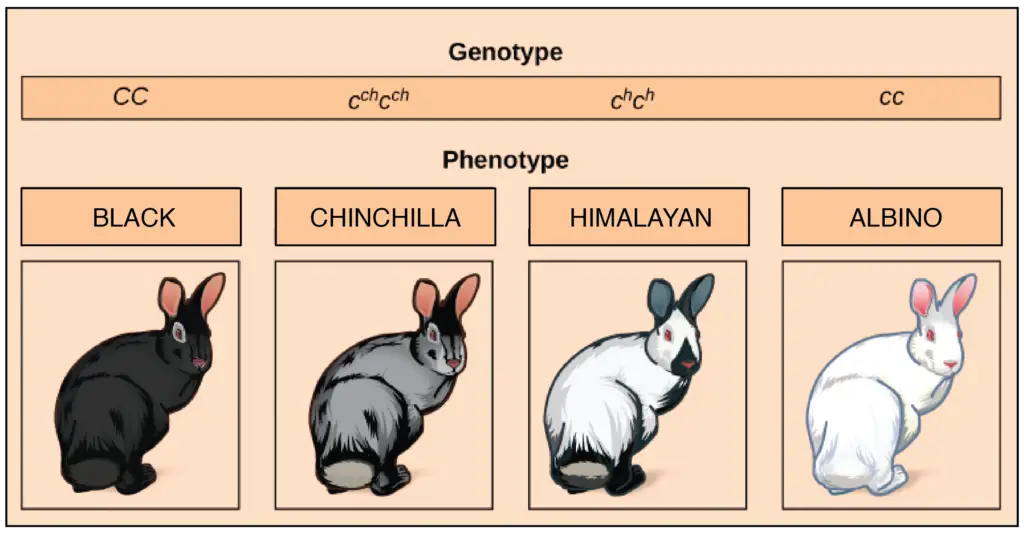What is Non-Mendelian Inheritance?
- Non-Mendelian inheritance refers to any inheritance pattern that deviates from the classical Mendelian framework. Mendelian inheritance, as established by Gregor Mendel, is based on the segregation and independent assortment of genes. In this model, traits are inherited according to specific ratios and follow predictable patterns based on single-gene interactions.
- However, numerous traits do not adhere to these Mendelian principles. Non-Mendelian inheritance encompasses various patterns where traits are inherited in ways that do not conform to Mendel’s laws. These deviations are due to the involvement of multiple genes, interactions between alleles, or other complex genetic mechanisms.
- One prominent example of non-Mendelian inheritance is incomplete dominance, where the phenotype of a heterozygote is an intermediate between the two homozygous phenotypes. This contrasts with Mendelian inheritance, where one allele is typically dominant over the other. Another example is codominance, where both alleles contribute equally and visibly to the phenotype.
- Additionally, there are cases of multiple alleles, where more than two allelic forms exist for a given gene, such as the ABO blood group system. Moreover, polygenic inheritance involves the interaction of multiple genes to influence a single trait, resulting in a continuous range of phenotypic variations.
- Sex-linked inheritance, where genes are located on sex chromosomes, further illustrates non-Mendelian patterns. Traits linked to the X or Y chromosomes display different inheritance patterns compared to autosomal traits. Lastly, mitochondrial inheritance, which involves genes in the mitochondria rather than the nucleus, demonstrates yet another deviation from Mendelian patterns, as these traits are inherited maternally.
- Therefore, non-Mendelian inheritance provides a broader understanding of genetic inheritance beyond the scope of Mendelian laws. It reveals the complexity of genetic interactions and the diverse mechanisms through which traits can be inherited.
Types of Non-Mendelian Inheritance
Non-Mendelian inheritance patterns reveal a range of genetic mechanisms that extend beyond Mendel’s classical laws of inheritance. These patterns involve complex interactions between genes and their expression. The following are key types of non-Mendelian inheritance:

- Codominance
- Definition: Codominance occurs when both alleles for a trait are fully expressed simultaneously, without one overshadowing the other. This results in a phenotype where both alleles are visible.
- Examples: The AB blood type is a prime example, where both A and B antigens are expressed on the red blood cells. In chickens, the presence of both black and white feathers in a heterozygote demonstrates codominance.
- Types:
- Multiple Alleles: Some traits are controlled by more than two alleles. For instance, coat color in rabbits is influenced by multiple alleles (C, c^ch, c^h, and c). Multiple alleles create a variety of phenotypes.
- Pleiotropy: This occurs when a single gene affects multiple traits. An example is Marfan syndrome, where a mutation in a single gene leads to a range of symptoms including tall stature, heart problems, and vision issues.
- Lethal Alleles: These alleles cause death when present in a homozygous state. For example, in mice, a yellow coat color allele is lethal when homozygous, affecting survival rates and phenotypic ratios in offspring.
- Incomplete Dominance
- Definition: Incomplete dominance is characterized by the intermediate expression of traits in heterozygotes. Here, neither allele is completely dominant, resulting in a blended phenotype.
- Examples: In four-o’clock plants, crossing red-flowered and white-flowered plants results in pink-flowered progeny, which shows an intermediate phenotype between the two parental traits.
- Polygenic Inheritance
- Definition: Polygenic inheritance involves multiple genes contributing to a single trait. The combined effect of these genes results in a continuous range of phenotypic variations.
- Examples: Human skin color is determined by several genes, each contributing to the overall pigmentation. The variation in skin color among individuals is due to the additive effects of these multiple genes.
- Multiple Alleles
- Definition: Multiple alleles refer to the existence of more than two allelic forms for a single gene. This increases the number of possible phenotypes.
- Examples: The ABO blood group system in humans is determined by three alleles (IA, IB, and i). The interaction between these alleles results in four blood types: A, B, AB, and O. Similarly, the coat color gene in rabbits has multiple alleles, each producing different color variations.
- Pleiotropy
- Definition: Pleiotropy occurs when one gene influences multiple, seemingly unrelated traits.
- Examples: Marfan syndrome is caused by a mutation in a single gene that affects several body systems, including the cardiovascular and skeletal systems, leading to diverse symptoms.
- Gene Linkage
- Definition: Gene linkage refers to genes located close together on the same chromosome, which tend to be inherited together.
- Examples: In fruit flies, genes controlling body color and wing shape often show linkage. For instance, flies with brown bodies are frequently found with normal wings, while those with black bodies often have vestigial wings.
- Extra-nuclear Inheritance
- Definition: Extra-nuclear inheritance involves genes located outside the nucleus, specifically in organelles like mitochondria and chloroplasts.
- Examples: Mitochondrial DNA is inherited maternally because mitochondria in sperm do not contribute to the offspring’s mitochondrial DNA. This pattern of inheritance applies to traits controlled by mitochondrial genes, such as certain human disorders.



Reference
- https://www.geeksforgeeks.org/non-mendelian-inheritance/
- https://humanbiology.pressbooks.tru.ca/chapter/5-13-non-mendelian-inheritance/
- https://www.ck12.org/c/life-science/non-mendelian-inheritance/
- https://www.boyertownasd.org/cms/lib/PA01916192/Centricity/Domain/99/New_Academic_Biology_Book/7_3_Mendelian_and_NonMendelian_Inheritance_in_Human_Genetics.pdf
- https://chopan.kvs.ac.in/sites/default/files/5%20principles%20of%20inheritance%20and%20variation%20ppt%20part%202.pdf
- https://www.researchgate.net/figure/Mechanisms-of-non-Mendelian-inheritance-patterns-with-examples_tbl1_233927756
- Text Highlighting: Select any text in the post content to highlight it
- Text Annotation: Select text and add comments with annotations
- Comment Management: Edit or delete your own comments
- Highlight Management: Remove your own highlights
How to use: Simply select any text in the post content above, and you'll see annotation options. Login here or create an account to get started.